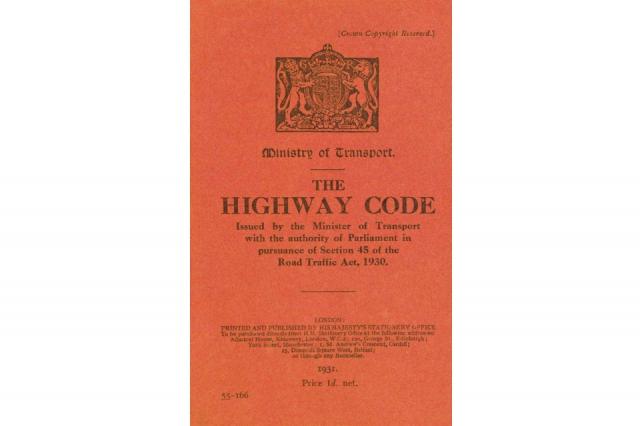The first tangible sign that Road safety was being taken seriously came when the Road Traffic Act 1930 introduced the Highway Code. First published in 1931, it was an attempt to establish the fundamentals of sharing a road with other users. The Act also stated that anyone who had a disability that could affect their Driving ability may “be subjected to a test to his fitness or ability to drive a motor vehicle”.
The Road Traffic Act 1934, a hotly debated piece of legislation, then made a driving test compulsory for anyone, irrespective of physical condition, who applied for a driving licence on or after April 1, 1934. Two hundred examiners, including sixteen supervisors, were recruited from 34,000 applicants to support the initiative and the test fee was set at 7s 6d. Candidates were required to demonstrate a basic understanding of the Highway Code and their ability to reverse, make a three-point turn, a hill start, and an emergency stop. A pink certificate was issued to those who passed, a yellow to those who failed to make the grade.
Introduced on March 16, 1935, on a voluntary basis, the driving test became compulsory from June 1st. In the run up to its introduction the motoring press devoted acres of editorial space to providing useful tips to their readership on how to hone their skills to meet the requirements of the examiner. The weekly magazine The Motor assuaged the concerns of many by reminding them that “the minimum of inconvenience and maximum of safety to other road users are the essentials of good road sense, and remember that much that passes under the name of road sense is really only courtesy”.
As there were no test centres, examiners would arrange to meet candidates at railway stations or parks. Mr R E L Beere of Kensington Hall Gardens, London W14, volunteered to take the test on March 16, 1935, becoming the first person in Britain to receive his pink certificate which he proudly displayed, in the company of his wife, to a crowd of assembled photographers.
In the first year, 246,000 took the test with a Pass Rate of 63%. Such was the demand that the Driving Test Organisation made an “unintended” profit of £16,000 leading to a reduction of the test fee to five shillings two years later. However, the driving test initially only lasted just over four years, suspended on September 2, 1939 for the duration of the Second World War until its reintroduction on November 1, 1946. Those who held a wartime provisional licence were granted a year from February 18, 1947 to convert them into full licences without the necessity of passing a test.
The modern driving test is a more onerous affair with an overall pass rate in 2021/2 of 50.5%, although, curiously, those taking their test for the first time achieved a pass rate of 52.6% and 8% fewer candidates taking tests in automatic cars passed than those in manual vehicles. Analysis of data provided by the Driving and Vehicle Standards Agency for the twelve month period from April 2022 suggests there is a wide variance in pass rates between test centres. At Speke in Liverpool out of more than 8,ooo candidates, only a quarter passed compared with 68% of the 1,800 taking their tests in Kendal.
Reflecting Hore-Belisha’s near-death experience, the 1934 Act also required pedestrian crossings to be clearly marked with an amber light globe sitting above a black and white pole. Popularly known as “Belisha beacons”, the first were installed on Kensington Road near Hyde Park in September 1934.
By the end of November there were some 10,000 in London, but, rather like ULEZ enforcement cameras, they were not universally popular, the Daily Mail reporting on November 12th that four men had shattered eighteen glass beacons with air guns. Eighty were stolen in Hampstead within weeks of installation and when the scheme was rolled out to the rest of the country, there were reports of “dismay and even rebellion” amongst regional officials. Plastic replaced glass to prevent vandalism and soon the furore died down, making them a distinctive piece of street furniture during my childhood. The road to safety on the highway has been a long and winding one!
This post first appeared on Windowthroughtime | A Wry View Of Life For The World-weary, please read the originial post: here

